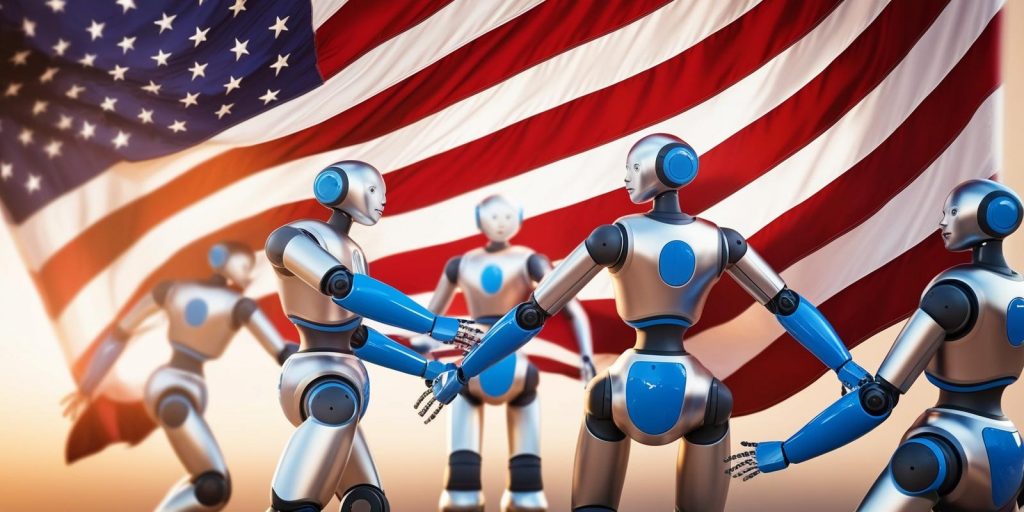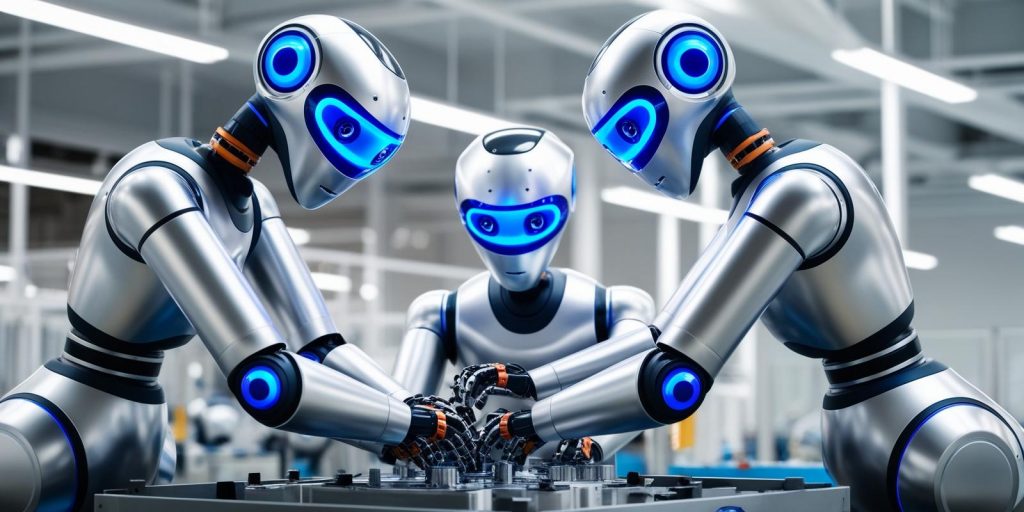The landscape of global trade has shifted dramatically in recent years, especially with the trade wars that spiked under President Donald Trump’s administration. Among the industries feeling the pinch of these tariffs, the robotics sector—particularly collaborative robots (cobots)—has found itself at a crossroads. As tariffs on foreign components and products make manufacturing more expensive, companies in the cobot market must find innovative ways to thrive in an evolving economic environment. However, this moment of disruption has also become an opportunity for the industry to rethink its strategies, accelerate technological advancements, and drive new adoption across multiple sectors.
So, where does the collaborative robot industry go from here? Let’s explore the fallout of the tariffs and how the uptick in technology adoption could shape the future of cobots.

The Tariff Fallout: A New Reality for Collaborative Robots
President Trump’s trade policies, particularly the tariffs on Chinese imports, created a wave of uncertainty for industries reliant on global supply chains, and robotics was no exception. Many of the key components that make cobots efficient, such as sensors, processors, and artificial intelligence (AI) systems, were largely sourced from China. These tariffs significantly increased the cost of manufacturing cobots, making them less affordable for companies already struggling to keep prices competitive.
The impact of these tariffs was twofold for cobot manufacturers:
-
Higher Component Costs: Tariffs on Chinese imports led to an increase in the cost of essential robot parts, making it harder for cobot manufacturers to maintain affordable production prices.
-
Supply Chain Disruptions: The reliance on international suppliers, especially those in China, meant that supply chains were vulnerable to trade policy changes. Delays and shortages became more common, affecting production timelines.
While these tariff challenges created short-term obstacles, they also presented a unique opportunity for cobot companies to rethink their strategies. This is where the uptake of technology and the increased demand for automation could serve as a crucial pivot point for the industry’s future growth.
Tech Uptake: A Catalyst for Growth
Despite the fallout from tariffs, the demand for collaborative robots has continued to rise, driven by several factors:
-
Labor Shortages and Rising Costs: The global labor shortage, exacerbated by the COVID-19 pandemic, has led many industries to adopt automation solutions to fill the gap. Cobots, which are designed to work alongside humans, offer a perfect solution by increasing efficiency without replacing the workforce entirely.
-
Technological Advancements: The continued development of AI, machine learning, and advanced sensors has made cobots more accessible, smarter, and versatile. These robots can now perform tasks ranging from complex assembly and precision tasks to quality control and customer interaction.
-
Cost-Effective Alternatives: While the tariffs increased costs in the short term, technological advancements in cobot design and manufacturing are making the robots more affordable. Companies are investing in the automation of their processes, seeing cobots as a long-term solution to reducing labor costs and improving productivity.
-
Increased Investment in R&D: To overcome the challenges posed by tariffs and supply chain issues, many robotics companies have doubled down on research and development. These investments are leading to faster innovation cycles, with cobots becoming more capable and specialized for specific industries, including healthcare, logistics, and manufacturing.
Request U.S. tariffs impact analysis now @ https://www.marketsandmarkets.com/pdfdownloadNew.asp?id=194541294

How Collaborative Robots Are Adapting
As tariffs reshaped the global trade environment, cobot companies have had to adapt in several ways to stay competitive and resilient:
-
Reshoring Production: To reduce reliance on international suppliers and mitigate tariff-related costs, many companies have begun reshoring or nearshoring their manufacturing. This strategy not only lowers the impact of tariffs but also allows companies to take advantage of tax incentives, such as those offered by Opportunity Zones in the U.S., to establish domestic production facilities.
-
Focus on Modular Design: Cobot manufacturers are increasingly designing robots with modularity in mind, enabling faster customization and deployment across different industries. These robots can be easily upgraded, allowing companies to maintain their investment while adapting to changing market conditions.
-
Local Supply Chains: In response to supply chain disruptions, cobot companies are working to establish more localized supplier networks. This reduces the risk of delays and mitigates the impact of tariffs, helping to keep production timelines on track.
-
Alternative Sourcing: To avoid being overly reliant on Chinese suppliers, many companies are seeking out alternative sourcing options. This has led to the growth of new suppliers in regions like Southeast Asia, Europe, and North America, which are emerging as key players in the global robotics supply chain.
The Future of Collaborative Robots
So, what’s next for the cobot industry as it navigates the fallout of tariffs and embraces the widespread uptake of technology? Several key trends are expected to shape the future of collaborative robots:
-
Wider Industry Adoption: As cobot prices continue to decrease, the barrier to entry for small and medium-sized enterprises (SMEs) will be reduced, opening up new markets for cobots. Industries like retail, healthcare, and logistics, which were once hesitant about automation, are now increasingly adopting collaborative robots to enhance operations and improve service delivery.
-
Human-Robot Collaboration: The future of cobots lies in further enhancing human-robot collaboration. As robots become more capable of performing complex tasks, there will be a greater emphasis on developing intuitive interfaces and technologies that allow workers to interact seamlessly with robots in real time.
-
AI and Automation Integration: Cobots will continue to evolve alongside advancements in AI and automation. In the near future, we will see robots that can adapt autonomously to new tasks, learn from their surroundings, and work alongside human operators with minimal oversight.
-
Sustainability and Green Robotics: As global sustainability becomes a priority, the robotics industry will also focus on creating energy-efficient cobots and reducing environmental impacts. Companies will need to consider both the economic and ecological costs of their robotic solutions, aligning their practices with the growing demand for green technologies.
-
Global Expansion and Emerging Markets: While North America, Europe, and Asia have been the primary drivers of cobot adoption, emerging markets are beginning to catch up. As tariffs impact the global landscape, new opportunities will arise in regions like Latin America, the Middle East, and Africa, where cobots can help address challenges in sectors like agriculture, healthcare, and manufacturing.
Conclusion: Rising from the Tariff Fallout
The collaborative robot industry has faced significant challenges due to the fallout from tariffs, but it has also seen immense technological growth and innovation. As companies adapt to new economic realities, including reshoring production, investing in R&D, and exploring new markets, the future of cobots looks increasingly promising. The technology’s ability to work alongside human workers, combined with its growing versatility and affordability, ensures that collaborative robots will continue to play a vital role in the global economy.
While the trade tensions of the past few years may have caused some short-term disruptions, they’ve also set the stage for a more resilient, technologically advanced, and widely adopted future for collaborative robots.
